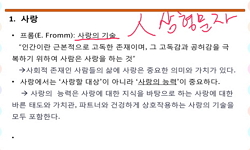이 글은 순천지역 교육선교에 상당한 역할을 감당해 온 매산학교의 역사에서 중요한 세 시기를 중심으로 전개되었다. 이 글의 연구 목적은 세 시기에 해당되는 1913년 은성 학교의 개교, 1921...
http://chineseinput.net/에서 pinyin(병음)방식으로 중국어를 변환할 수 있습니다.
변환된 중국어를 복사하여 사용하시면 됩니다.
- 中文 을 입력하시려면 zhongwen을 입력하시고 space를누르시면됩니다.
- 北京 을 입력하시려면 beijing을 입력하시고 space를 누르시면 됩니다.

순천지역 교육선교와 매산학교 - 선교부와 지역교회의 교제를 중심으로 - = Suncheon Area Educational Mission and Maesan School - Focusing on the Koinonia between the Missionary Society and the Local Church -
한글로보기부가정보
국문 초록 (Abstract)
이 글은 순천지역 교육선교에 상당한 역할을 감당해 온 매산학교의 역사에서 중요한 세 시기를 중심으로 전개되었다. 이 글의 연구 목적은 세 시기에 해당되는 1913년 은성 학교의 개교, 1921년 매산학교의 개교, 1937년 매산학교의 폐교와 연관된 상황을 통해 서, 순천지역의 교회와 남장로교 선교회는 어떻게 만났고 어떤 관계 맺기를 하였는지 살피는 데 있다. 1913년에 개교한 은성학교는 ‘순천지역 교육선교’를 넘어서는 의미를 지니고 있다. 남장로교 선교회는 일찍부터 자생적 신앙공동체로 성장해 온 순천읍교회의 요구와 필요 가 무엇인지 알고자 했고, 현지인 신앙공동체 역시 선교회의 선교기지(스테이션) 설치에 공감하면서 협력했다. 그 협력은 1909년의 만남과 1910년의 순천선교기지 설립을 결 정하면서 구체화되었다. 그러나 은성학교는 1915년 일제의 사립학교규칙 개정으로 인 하여 성경과목을 가르칠 수 없어 1916년에 폐교하였다. 이 시기에 선교회는 신학문 및 직업교육에 의한 기독교적 가치관을 전달하였고, 지역교회는 근화에 한 배움과 열망을 보여주었다. 이렇게 선교회와 지역교회는 깊은 신뢰를 바탕으로 교제하였고, 무 엇보다 은성학교가 ‘성경을 가르치는 학교’라는 인식을 지역에 뿌리내리게 하였다. 1921년 매산학교의 개교는 3.1운동 이후 한국에 한 일제의 문화 정치적 상황에서 이뤄졌다. 한편으로는 지역의 기독교계 인사들이 사립학교를 설립하는 데 힘을 모은 결 과이기도 했다. 선교부는 재정상의 이유로 보통과만 개설하려고 하였지만, 특별히 순천 읍교회 이기풍 목사와 몇몇 교인들이 고등과 설치를 강력히 요구했다. 이 시기 지역교회 와 선교부는 협력하여 매산학교를 소생시켰으며, 교회와 학교가 결국 지역선교의 토를 마련해야 한다는 인식을 공유하면서 고등과를 설치하고 기독교적 일꾼을 길러내고자 협력하였다. 그런데 매산학교는 1937년 가을 신사참배 거부로 자진 폐교하였다. 당시 신사참배 문제로 미션학교가 문을 닫게 되는 상황을 안타까워하는 기독교계 인사들이 적지 않았 다. 지역의 비기독교인들은 미션학교가 없어지는 것을 한국 해방의 마지막 희망이 사라 지는 것으로 여기기도 했다. 이러한 때에 남장로교 선교회는 신사참배 문제를 ‘유일신교 와 다신교 사이의 문제’이자 ‘신사참배 문제를 양보하는 것은 모든 기독교 선교의 목적과 프로그램을 망쳐버린다’고 보았다. 결국 매산학교는 자진 폐교하였고, 순천지역 교회들 의 모임인 순천노회는 신사참배를 결정하면서 남장로교 선교회와 다른 입장을 표명하였 다. 이후 선교부와 지역교회의 교제(koinonia)가 단절되었다. 그러나 매산학교의 폐교는 당시 한국인의 열망이었던 근화 그 이상으로 한국기독교 의 미래지형을 바꾼 사건이라고 해도 과언이 아니다. 역사에서 기독교 신앙이 과연 무엇 인지? 기독교신앙과 그 의미를 새로운 차원에서 던져준 사건이 되고 있기 때문이다. 매산학교의 폐교는 비록 과거의 일이었지만, 앞으로도 순천지역 교육선교의 온전성을 풍부하게 해 주는 요소로 작용할 것이다.
다국어 초록 (Multilingual Abstract)
This essay is centered on three important periods in the history of Maesan School which played a considerable role in the Suncheon area educational mission. The purpose of this article is to inquire about how to establish and relate to the relationshi...
This essay is centered on three important periods in the history of Maesan School which played a considerable role in the Suncheon area educational mission. The purpose of this article is to inquire about how to establish and relate to the relationship between the churches in Suncheon and the Presbyterian Missionary Society in the United States. This is done through the context of the opening of the Eunseong School in 1913, the establishment of the Maesan School in 1921, and the closure of the Maesan School in 1937. Eunseong School, which was opened in 1913, has meaning beyond the ‘Suncheon Area Educational Mission’. The Presbyterian Missionary Society in the United States wanted to know the needs of Suncheon-Eup Church (Current Suncheon Central Church), which had grown into a Protestant self-sustainable faith community early on. The Society also wanted to know the needs of community members who cooperated while agreeing on the establishment of the Missionary Station in Suncheon. The cooperation was shaped by the meeting of 1909 and in deciding the establishment of the Suncheon Mission Station in 1910. However, Eunseong School was closed in 1916 because it could not teach Bible subjects due to the revision of the private school rules of Japanese imperialism in 1915. During this time, the Missionary Society communicated Christian values through a new science and vocational education, and the local church believers showed learning and aspirations of modernization. In this way, the Missionary Society and the local church communicated with deep trust. Above all the Eunseong School was rooted in the perception that it is a ‘Bible teaching school’ in the Suncheon area. Opened in 1921, the establishment of the Maesan School was made under the Japanese cultural and political situation of Korea after the 3.1 movement. On the other hand, it was also a result of the efforts of local Christian figures to establish a private school. The Missionary Society wanted to open only the primary school for financial reasons, but a minister of the Suncheon-Eup Church, Lee Gee-Pung and some members strongly demanded the establishment of the high-grade school. The local churches and the Missionary Society in this period joined forces to revive the Maesan School and cooperated to establish a high-grade school. This would raise Christian workers while sharing the recognition that the churches and schools should eventually lay the foundation for regional missions. However, Maesan School voluntarily closed its doors as a refusal to go to the shrine in the autumn of 1937. Few Christian figures lamented that the mission school was closed due to the issue of visiting the shrine at that time. Local residents of the region also regarded the disappearance of Mission School as the disappearance of the last hope of Korean liberation. At this time, the Presbyterian Missionary Society in the United States saw the issue of shrine visits as “a problem between monotheism and polytheism,” and “conceding on the issue of shrine visits ruins all Christian mission objectives and programs.” In the end, Maesan School was voluntarily closed, and the Suncheon presbytery, a group of churches in the Suncheon area, decided to visit the shrine and expressed a different position from the Missionary Society. Since then, the Koinonia between the Missionary Society and the local churches has been cut off. However, it is no exaggeration to say that the closure of Maesan School changed the future terrain of Korean Christianity more than the modernization which was the desire of the Korean people at that time. What is Christian faith in history? It is an event that the Christian faith and its meaning have been thrown into a new dimension. Although the closure of the Maesan School happened in the past, it will serve as a factor that enriches the whole educational mission of the Suncheon area.
참고문헌 (Reference)
1 Anabel Major Nisbet, "호남선교 초기 역사" 경건 2011
2 George Thompson Brown, "한국선교이야기" 동연 2010
3 김수진, "한국기독교회사 : 호남편"
4 김승태, "한국기독교와 신사참배 문제" 한국기독교역사연구소 1991
5 박정환, "초기 제주도 개신교 형성사: 이기풍 선교사 이전 현지인 신앙공동체를 중심으로" 한국기독교역사학회 (39) : 181-208, 2013
6 신광철, "천주교와 개신교, 만남과 갈등의 역사" 한국기독교역사연구소 1998
7 윤정란, "전남 순천지역 기독교의 수용과 확산" 숭실사학회 (26) : 75-105, 2011
8 순천시, "순천시사 : 정치사회편"
9 순천노회사료펀찬위원회, "순천노회사"
10 양성호, "박영자 권사 면담 자료"
1 Anabel Major Nisbet, "호남선교 초기 역사" 경건 2011
2 George Thompson Brown, "한국선교이야기" 동연 2010
3 김수진, "한국기독교회사 : 호남편"
4 김승태, "한국기독교와 신사참배 문제" 한국기독교역사연구소 1991
5 박정환, "초기 제주도 개신교 형성사: 이기풍 선교사 이전 현지인 신앙공동체를 중심으로" 한국기독교역사학회 (39) : 181-208, 2013
6 신광철, "천주교와 개신교, 만남과 갈등의 역사" 한국기독교역사연구소 1998
7 윤정란, "전남 순천지역 기독교의 수용과 확산" 숭실사학회 (26) : 75-105, 2011
8 순천시, "순천시사 : 정치사회편"
9 순천노회사료펀찬위원회, "순천노회사"
10 양성호, "박영자 권사 면담 자료"
11 최영근, "미국남장로교 선교사 존 페어맨 프레스톤(John Fairman Preston, Sr.)의 전남지역선교에 관한 연구" 기독교사상과문화연구원 48 (48): 85-113, 2016
12 "미국 남장로회 선교본부 보관 자료, 「변요한 Biographical Information in 필라델피아」"
13 인돈학술원, "미국 남 장로회 내한선교사 편람" 한남대학교 출판부 2007
14 매산100년사 편찬위원회, "매산백년사"
15 순천매산고등학교, "매고신문 (창간호)"
16 "동아일보"
17 "기독신보"
18 大韓私立中高等學校會, "私學"
19 朝鮮예수敎長老會總會, "朝鮮예수敎長老會史記"
20 "Report of the Educational Committee"
21 "Report of Business Committee"
동일학술지(권/호) 다른 논문
-
송기숙의 『오월의 미소』에 드러난 국가폭력과 치유의 형상화 양상 고찰
- 순천대학교 남도문화연구소
- 전수평
- 2017
- KCI등재
-
- 순천대학교 남도문화연구소
- 박용진
- 2017
- KCI등재
-
- 순천대학교 남도문화연구소
- 강희안
- 2017
- KCI등재
-
- 순천대학교 남도문화연구소
- 김덕진
- 2017
- KCI등재
분석정보
인용정보 인용지수 설명보기
학술지 이력
| 연월일 | 이력구분 | 이력상세 | 등재구분 |
|---|---|---|---|
| 2027 | 평가예정 | 재인증평가 신청대상 (재인증) | |
| 2021-01-01 | 평가 | 등재학술지 유지 (재인증) |  |
| 2018-01-01 | 평가 | 등재학술지 유지 (등재유지) |  |
| 2015-01-01 | 평가 | 등재학술지 선정 (계속평가) |  |
| 2013-01-01 | 평가 | 등재후보 1차 FAIL (등재후보1차) |  |
| 2012-01-01 | 평가 | 등재후보학술지 유지 (기타) |  |
| 2010-01-01 | 평가 | 등재후보학술지 선정 (신규평가) |  |
학술지 인용정보
| 기준연도 | WOS-KCI 통합IF(2년) | KCIF(2년) | KCIF(3년) |
|---|---|---|---|
| 2016 | 0.32 | 0.32 | 0.38 |
| KCIF(4년) | KCIF(5년) | 중심성지수(3년) | 즉시성지수 |
| 0.39 | 0.42 | 0.641 | 0.13 |




 KCI
KCI eArticle
eArticle




